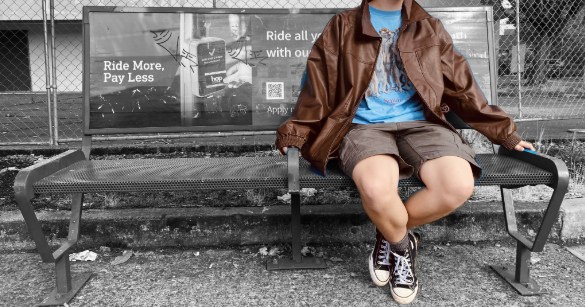
While most artists at Franklin High School (FHS) enroll themselves in Art 1-2 or Ceramics, the most strategic of the bunch take Business class. Their position in upper level business classes gives them daily exposure for their art, and attracts many an inquiring eye to explore their pen strokes more carefully. Their canvas: the whiteboard. Their medium: the dry erase marker. Their audience: hungry high schoolers. I am of course referring to the highly selective and elusive Franklin High School Student Store marketing teams.
While there are many artists on these teams, they all call Mr. Biamont’s Student Store Management & Philanthropy class their home base. “At its fundamental core, it’s a business management class,” says Biamont. Student Store Management & Philanthropy builds on the fundamentals the business students learned in Introduction to Business or Personal Finance. “[The class] is a chance to actually use that stuff we’ve learned for business and put it into practice with the store, writing business plans, [and] work[ing] with nonprofit centers.”
The other ongoing aspect of the class is managing the FHS Student Store, where the artists gather to do their work. “We have a marketing team that does the promotion of the business, […] a finance team that does all the deposits [and] take[s] care of all the accounting work, […] and then we have an operations group that gets the store set up for the day,” explains Biamont. The groups rotate monthly, allowing each member to execute the duties of each role three times a year.
Lilyan Nimo, FHS senior and professional A-day artist, was on the marketing team in October and reflects on her time managing the whiteboards with truly inspiring passion. “I looked at the Instagram, old posts way back when it was the old school [before the remodel in 2017], their whiteboards were amazing. That’s where the inspiration came from.” Another key artist, senior Jordy Pardo-Mendoza, was on the B-day marketing team last month, and confirms their sources of inspiration. “We were definitely inspired by Student Store classes in the past,” says Pardo-Mendoza. “They used to have really creative whiteboards […] and our whiteboards were just flops,” he adds.
In the 2021-22 school year, the staff placed less emphasis on whiteboard art. Nimo recounts her experience from last year, saying, “It was truly a mess. We didn’t really care too much about the whiteboard.” After Nimo stepped in to help out with the illustrations, the game was changed. “We really stepped up our game after that. We got great ideas, [and] we were executing them,” she says. “And then [the] B-day [team] saw that as competition and they stepped up their whiteboard game.”
Both Nimo and Pardo-Mendoza are confident their masterpieces are such a draw that sometimes customers will even get a side of frozen yogurt with their art. “I’ve heard people are excited to see [the marketing team] wheel out the whiteboard and see what the new flavor of the day is,” says Nimo. Pardo-Mendoza agrees, saying, “Honestly I think we’ve always [had] a lot of traffic with our fro-yo but I think now people are noticing it more.”
Both artists from the A-day and B-day groups have very strict rules for their whiteboard art. “Most of the time we like to be punny and we relate characters to the flavors, not necessarily just draw the food,” Nimo says, explaining how A-day captures the attention of their customers. Pardo-Mendoza agrees on that point. “We base it on the flavor but we have a few designs that we like, like the ‘Family Guy’ art.” Nimo believes coloring the picture in completely is also very important, another sentiment that Pardo-Mendoza agrees with. “It’s also really important to trace your drawings from the projector,” he adds. The A-day artists feel disgusted by this approach, believing that tracing the drawings amounts to cheating. Pardo-Mendoza counters this point by saying, “I would rather trace it and have it look pretty than have it look ugly but hand drawn.”
Biamont encourages a friendly rivalry between the artists from A-day and B-day. “I always tell kids competition is not a bad thing, right? Competition’s okay. And especially when it creates a better product in the end, right. And so a little fun competition in this case has […] upped the game of both classes. Nobody wants to be one-upped by the other class. And so it just encourages them to take a little bit more time and do a little bit better job than maybe they had done before.”
Despite past incidences of foul play, both A-day and B-day have reached a place of mutual respect, founded over their art. “Now […] we both inspire each other,” says Pardo-Mendoza. “Now it’s more like, okay they’re cute. Let’s see what we can do next.”

































